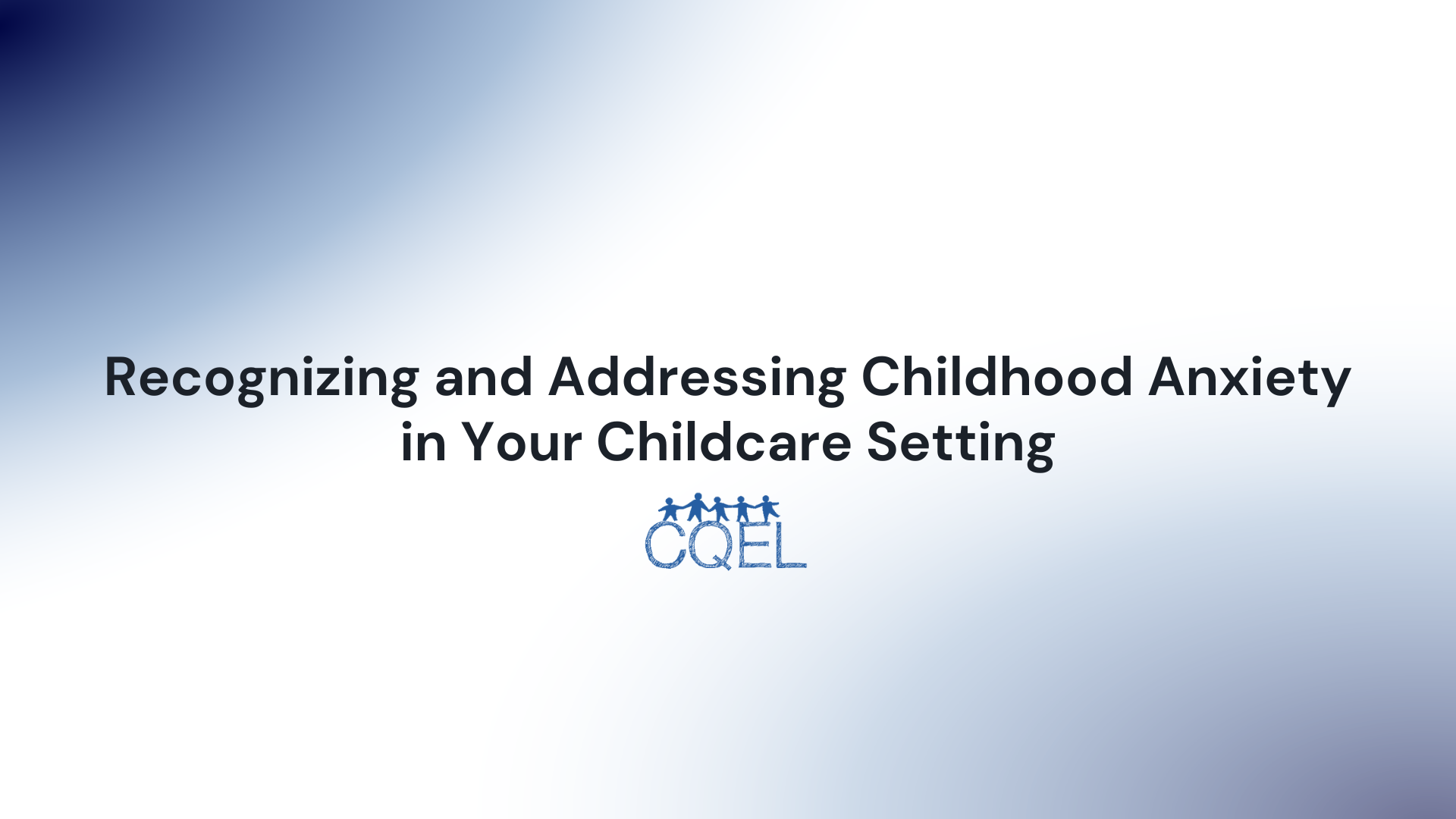Recognizing and Addressing Childhood Anxiety in Your Childcare Setting
Childhood anxiety, a prevalent mental health issue affecting children of all ages, is often overlooked or misinterpreted in childcare settings. As childcare providers, understanding its signs, effects, and coping strategies is crucial.

Childhood anxiety, a prevalent mental health issue affecting children of all ages, is often overlooked or misinterpreted in childcare settings. It's characterized by intense fear or worry that can affect a child's daily activities, including play and interaction with peers. As childcare providers, understanding its signs, effects, and coping strategies is crucial.
Recognizing the Signs
Recognizing childhood anxiety begins with being observant of behavioral changes or patterns. Children with anxiety may show physical signs like restlessness, fatigue, or difficulty concentrating. Emotional signs can include excessive worry, fear, or avoidance of social situations. They may also have panic attacks or exhibit repetitive behaviors, similar to those seen in Obsessive-Compulsive Disorder (OCD). The Child Mind Institute provides a comprehensive guide on recognizing the signs of anxiety in children.
Understanding the Effects
Anxiety can impact a child's academic performance, social interactions, and overall well-being. Children experiencing anxiety may have a hard time concentrating, leading to reduced academic performance. Socially, they may avoid interactions with peers, leading to isolation. It can also lead to physical health issues like headaches or stomachaches. The American Academy of Child and Adolescent Psychiatry offers in-depth information on how anxiety affects children.
Creating a Safe and Supportive Environment
Childcare providers can help manage childhood anxiety by creating a safe, reassuring, and supportive environment. This includes maintaining a consistent routine, as unpredictability can trigger anxiety. It also involves encouraging open communication, allowing children to express their fears or worries without judgment. The National Association for the Education of Young Children (NAEYC) provides resources on how to foster a supportive environment.
Teaching Coping Strategies
Childcare providers can also teach children coping strategies to manage anxiety. This can include simple relaxation techniques like deep breathing exercises, visualization, or yoga for kids. Additionally, teaching children about their emotions and how to manage them can be a helpful tool. Resources such as the Anxiety and Depression Association of America (ADAA) provide child-friendly coping strategies and activities.
Working with Parents and Professionals
Cooperation between childcare providers, parents, and mental health professionals is vital in managing childhood anxiety. Sharing observations with parents and seeking their insights can provide a fuller picture of the child's behavior. If necessary, referrals to mental health professionals may be required for further evaluation and treatment. The American Psychological Association (APA) outlines the role of psychologists in diagnosing and treating childhood anxiety.
Continuing Education and Training
It's crucial for childcare providers to continually educate themselves on childhood anxiety and mental health. Attending workshops, webinars, or professional development courses can enhance understanding and provide new strategies for managing anxiety in a childcare setting.
Recognizing and addressing childhood anxiety is an essential part of fostering an inclusive, supportive childcare environment. By staying informed, collaborating with parents and professionals, and implementing effective coping strategies, childcare providers can help children with anxiety thrive.
